Last Updated: July 9, 2024
Kyoto is the capital of the Honshu Island in eastern Japan. It was Japan’s capital and the emperor’s home for more than 1,000 years (794 to 1868). 1.46 million people lived here in 2020. In this post, I’ll show you the Best way to Spend 48 Hours in Kyoto!
Kyoto has more than 2,000 Buddhist temples and Shinto shrines, the most any city has in all of Japan. One of the most famous shrines is Fushimi Inari Shrine. Visitors can also check out imperial palaces, tea ceremonies, gardens, Arashiyama Bamboo Forest, and maybe see a geisha (female entertainer) in the Gion district.
Sadly, Kyoto was affected by several fires and wars in the past. But during World War II, the enemies noticed the city’s historic importance, so they spared Kyoto from atomic bombings. Today, Kyoto is a modern city that’s proud to be the cultural capital of Japan. Thousands of visitors come here every year to experience its rich cultural heritage.
Disclosure: I only recommend products that I’ve used in the past, and all opinions expressed in this post are my own. This post contains affiliate links. If you use one of the links throughout the page to buy something, I may earn a small commission at no extra cost to you. Thank you!
Things to See and Do in Kyoto
Wander Around Arashiyama Bamboo Grove
Address: Arashiyama Genrokuzancho, Ukyo Ward, Kyoto, 616-0007, Japan
Let’s start with one of Kyoto’s top attractions! Arashiyama Bamboo Grove is a peaceful and serene forest of thousands of bamboo trees. They are standing proudly on the left and right side of a 500-meter (1,640 ft) walking path. Some of the trees are up to 27 meters (90 feet) high!

In Japan, bamboo trees are a symbol of strength that are supposed to keep evil spirits away.
While it’s a beautiful walk next to the bamboo trees, Arashiyama Bamboo Grove often gets very busy with tourists. So I recommend visiting in the early morning or close to sunset to avoid them. I came during the day, but stumbled upon other paths near the forest, where there was barely anyone!
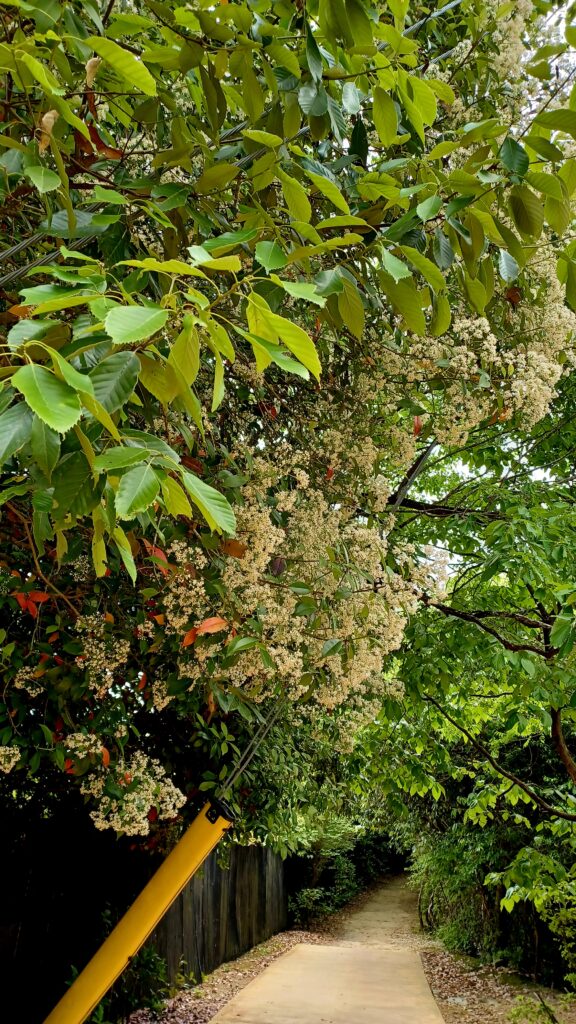
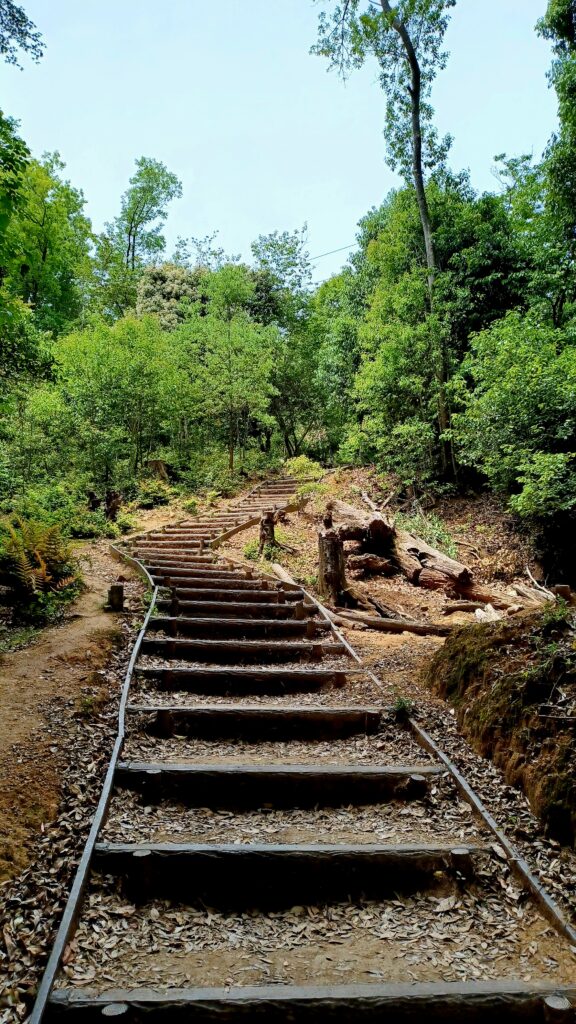
Arashiyama Bamboo Grove is always open and there’s no admission fee.
To get there, just hop on the JR Sagano Line from Kyoto Station. Then exit at Saga-Arashiyama Station and walk for 10 minutes to get to Arashiyama Bamboo Grove.
Visit Seiryo-ji Temple
Address: 46, Sagashakadofujinokicho, Ukyo-ku, Kyoto-shi, Kyoto, Japan
On my way back to Saga-Arashiyama train station, I stopped at Seiryo-ji Temple for a bit. This less crowded temple complex was completed in 895 AD. Its main buildings are the main hall and Tahoto pagoda. The temple belongs to the Jodo Buddhist sect.
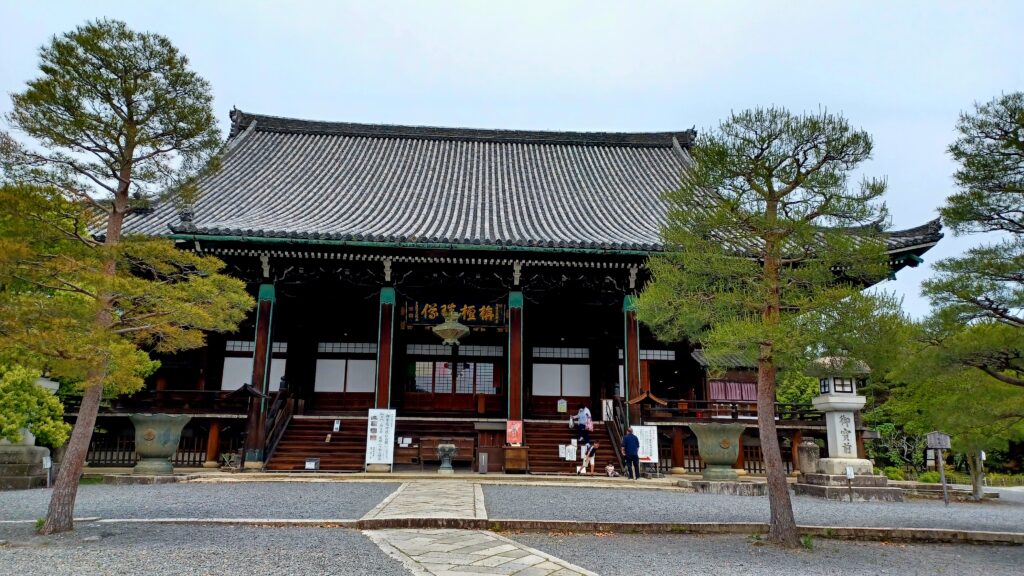
Seiryo-ji Temple is famous for its carved wooden statue of Shaka Nyrorai, a young buddha. It’s a national treasure and is only shown to the public on the 8th of the month in April, May, October, and November from 11 am.
Visitors can see the main hall’s interior after paying a 400 ¥ admission fee. There’s a peaceful garden area to explore within the temple complex as well.
If you’re interested in visiting more less crowded temples in Kyoto, check out Brandon’s post about 5 Lesser-Known Temples in Kyoto!
Fushimi Inari Shrine
One of Kyoto’s Instagram hotspots is the tunnel of thousands of torii gates at Fushimi Inari Shrine. Every torii gate was donated by people or companies and the donor’s name and donation date is written on the back of each gate.
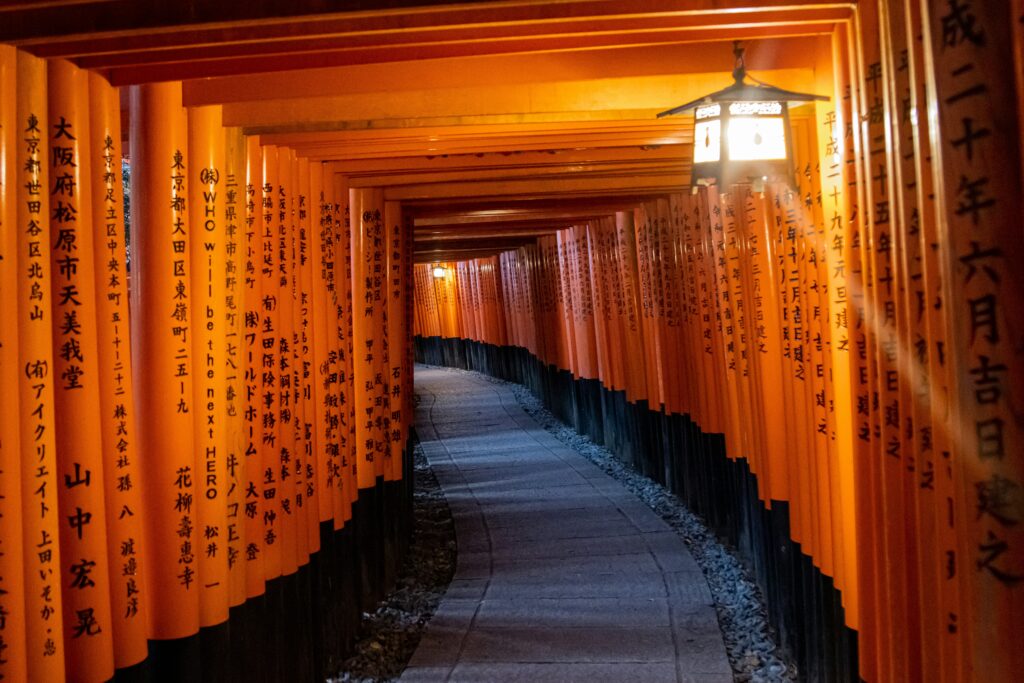
Fushimi Inari Shrine is one of the shrines that were built to honour Inari, the Shinto god of rice. It says that foxes are Inari’s messengers, which is why there are several fox statues within the shrine complex.
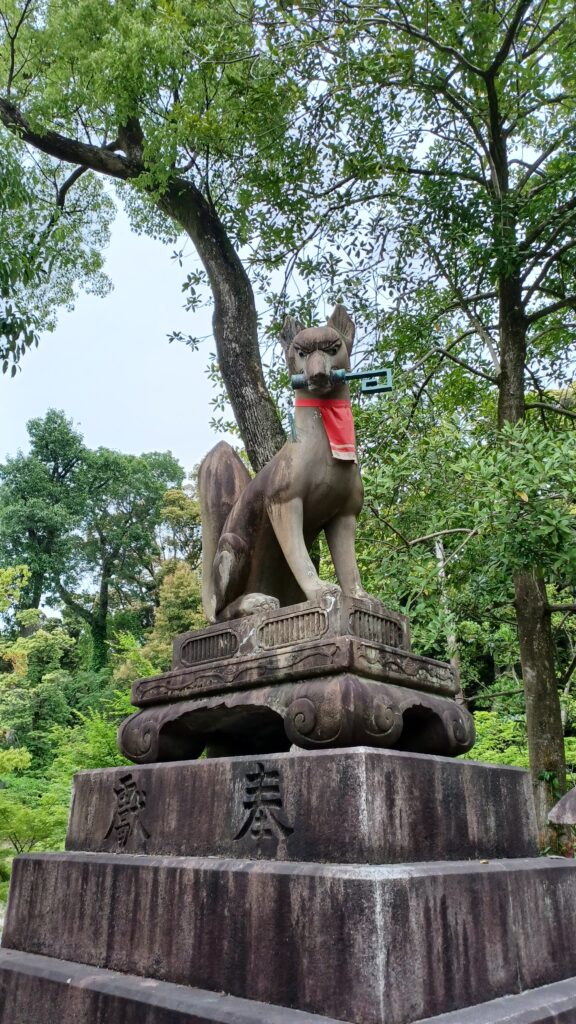
There are some other buildings around the shrine grounds as well, like the Main Shrine, Worship Hall, Hall of Shinto Music and Dance, and the Shrine Office.
If you keep on walking through the torii tunnel, you’ll end up at the peak of the sacred Mount Inari (233 m/764 ft). The hike up and back to the shrine area takes 2 to 3 hours. There are also restaurants along the way that serve local dishes, e.g. Inari Sushi, aburaage (fried tofu), and Kitsune Udon noodles.
To get to Fushimi Inari Shrine, take the JR Nara Line from Kyoto Station to JR Inari Station (5 minutes). It’s only a short walk to the shrine grounds.
Similar to Arashiyama Bamboo Grove, Fushimi Inari Shrine often gets packed with tourists during the day. But it’s open 24/7 and there’s no admission fee.
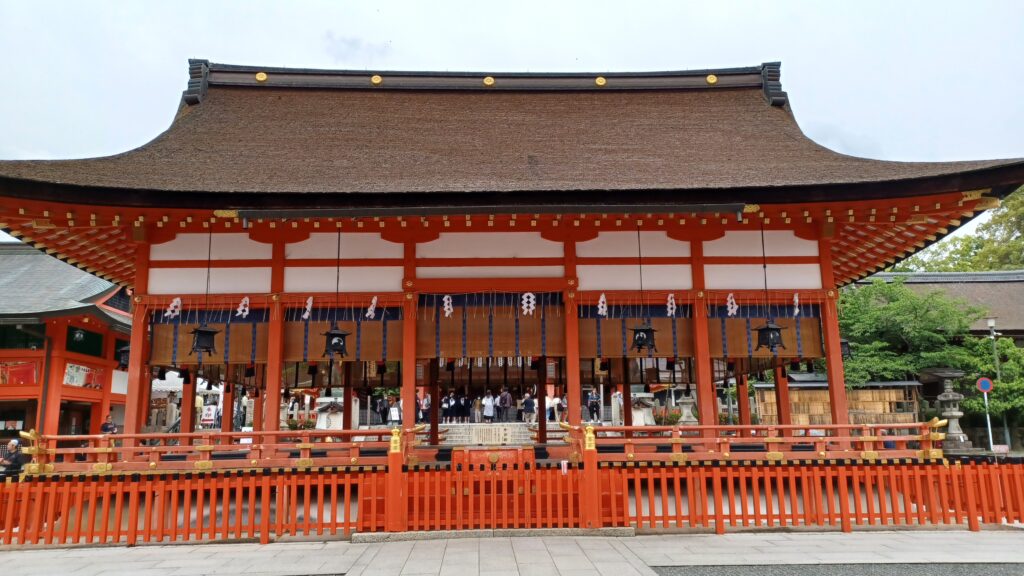
Join a Traditional Japanese Tea Ceremony
A great way to dive into Japanese culture is to join a traditional tea ceremony. Two ways to book this experience is through Get Your Guide or Viator, which I did as well. I participated in a 45-Minute Tea Ceremony Experience with Tea Ceremony Koto (37 Nishi Goshonouchi-cho, Kinugasa Kita-ku, Kyoto, 603-8377, Japan).
After entering the building, our group of 10 people sat down in a circle in a tatami floor room. First, the tea master introduced us to the tea ceremony’s long history and its important role in Japanese society until today. Then she taught us formal rules every participant had to follow during the ceremony.
Next, our hostess made the first kind of matcha tea and served it to us. A few minutes later, one after the other used these rules by saying the following words to the person next to them:
“Thank you for joining me”, then “Excuse me for being ahead of you”, and finally “Thank you for the tea”.
Then we could proof our skills by making a different flavour of matcha tea ourselves, said the same phrases, and drank it together. We all had our own cup, and tried some tasty Japanese sweets as well!
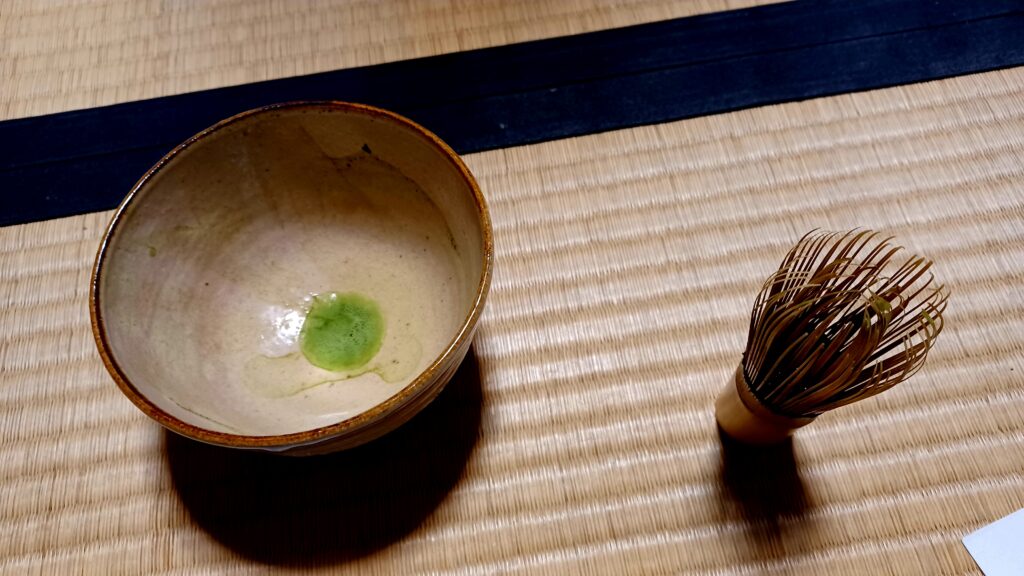
The 45-minute tea ceremony experience costs 3,300 ¥ per person and you can add a kimono rental as well for an authentic experience. While I didn’t do it this time, I already look forward to trying on a kimono on my next Japan trip! 🙂 The tea master was happy to take pictures of us at the end, too.
Walk Around the Gion District
Before hopping on the train to the next city, I had to stop in Gion, also known as Kyoto’s famous Geisha district! It’s located around Shijo Avenue, between Yasaka Shrine in the east, and the Kamo River in the west.
Many tourists come here to shop, eat, or spend time at an ochaya (tea house), where geiko (Kyoto dialect for geisha) and maiko (geisha trainees) entertain visitors.
Sometimes geiko and maiko are walking on the streets of the Gion district as well. This guide by Wanderlust UK is great to learn about their life and how to behave as a tourist if you meet one of these iconic performers.
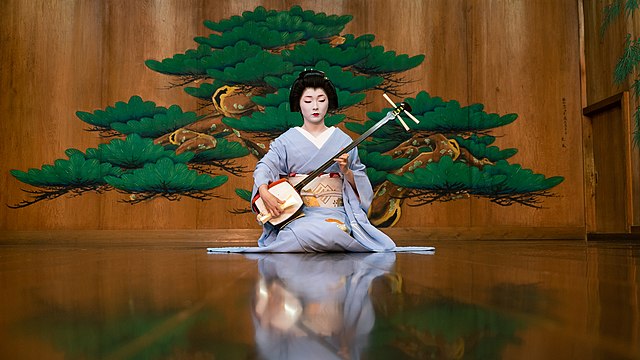
A local told me that Gion district mostly comes to life during the evening. While I didn’t meet a geiko or maiko this time, I stumbled upon an impressive statue! Besides, the Gion District is famous for its traditional wooden machiya (merchant houses) and narrow side roads.
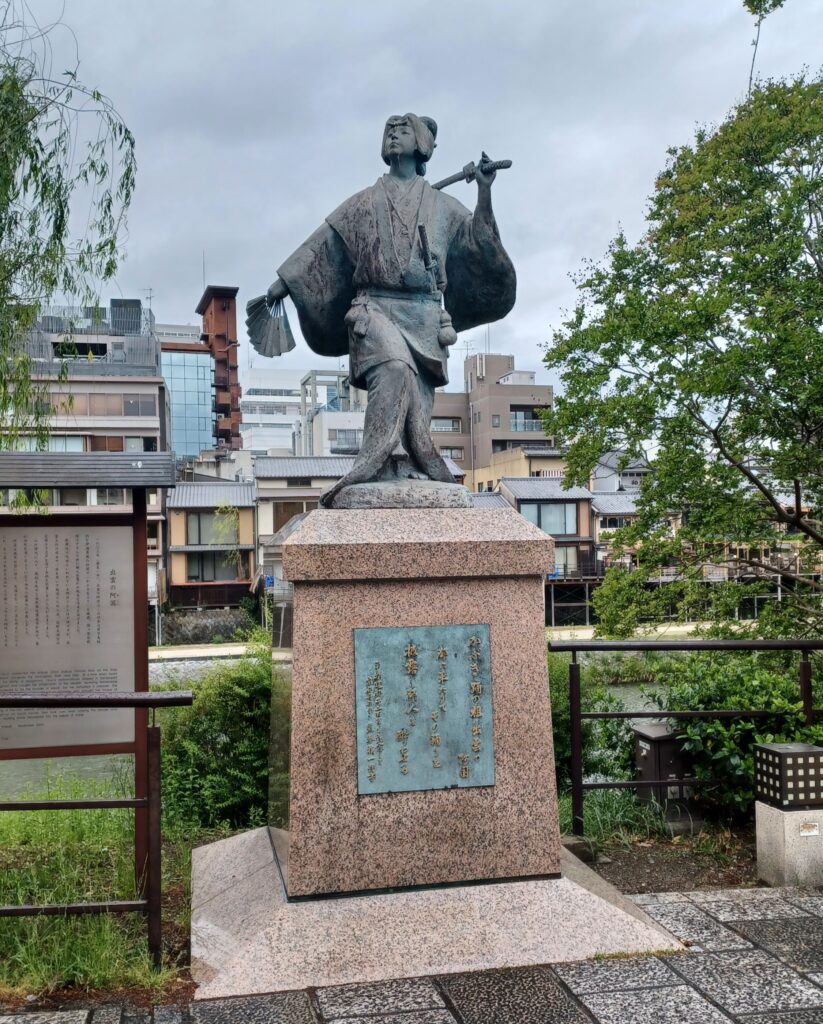
From Kyoto Station, take bus #206 and get off at Gion bus stop (about 20 minutes). Or if you’re taking the local train, exit at Gion-Shijo Station on the Keihan Line or Kyoto-Kawaramachi Station on the Hankyu Line to get to the Gion District.
Visit The Kyoto International Manga Museum
Address: 452 Kinbukicho, Nakagyo Ward, Kyoto, 604-0846, Japan
If you like manga (Japanese comics and graphic novels) don’t miss The Kyoto International Manga Museum, which opened in 2006. Manga have been an important part of Japanese culture for a long time and have spread all over the world in the past decades!
Here you’ll learn about the history of manga, which started during the Taisho era (1912-1926). The manga on the shelves are in Japanese, but there’s a small section of translated manga on the ground floor, too (e.g. Portuguese, German, and French).
The “What is Manga?” permanent exhibit on the second floor is the best part, in my opinion. Its shelves display a huge selection of manga from 1912 to 2005, including Dragon Ball, Sailor Moon, and Kamikaze Kaitou Jeanne! You’ll also learn how manga are made and if all manga artists are millionaires or not!
Here’s a promotional video of The Kyoto International Manga Museum:
Visitors are welcome to read one or more of the 50,000 manga inside the museum reading areas. If you’re here on a holiday or weekend, stop by the Manga Studio, where you can watch real manga artists at work! In the Portrait Corner, a manga artist is happy to draw a portrait of you!
Photography is often not allowed at the Kyoto International Manga Museum to protect the artwork and/or because of copyright.
The Kyoto International Manga Museum is open daily (except Wednesdays) from 10 am to 5 pm (last entry is at 4:30 pm). Admission is 1,200 ¥ for adults (19+), 400 ¥ for High School and Junior High School students (13-18 years), and 200 ¥ for elementary school students (6-12 years).
Watch Out for the Famous Poké Lids
While exploring Kyoto, be sure to look down once in a while, and you may spot one of the colourful Poké Lid manhole covers! I found one with Totodile and Azumarill on it (Address: Kankijicho, Shimogyo Ward, Kyoto, 600-8835, Japan)!
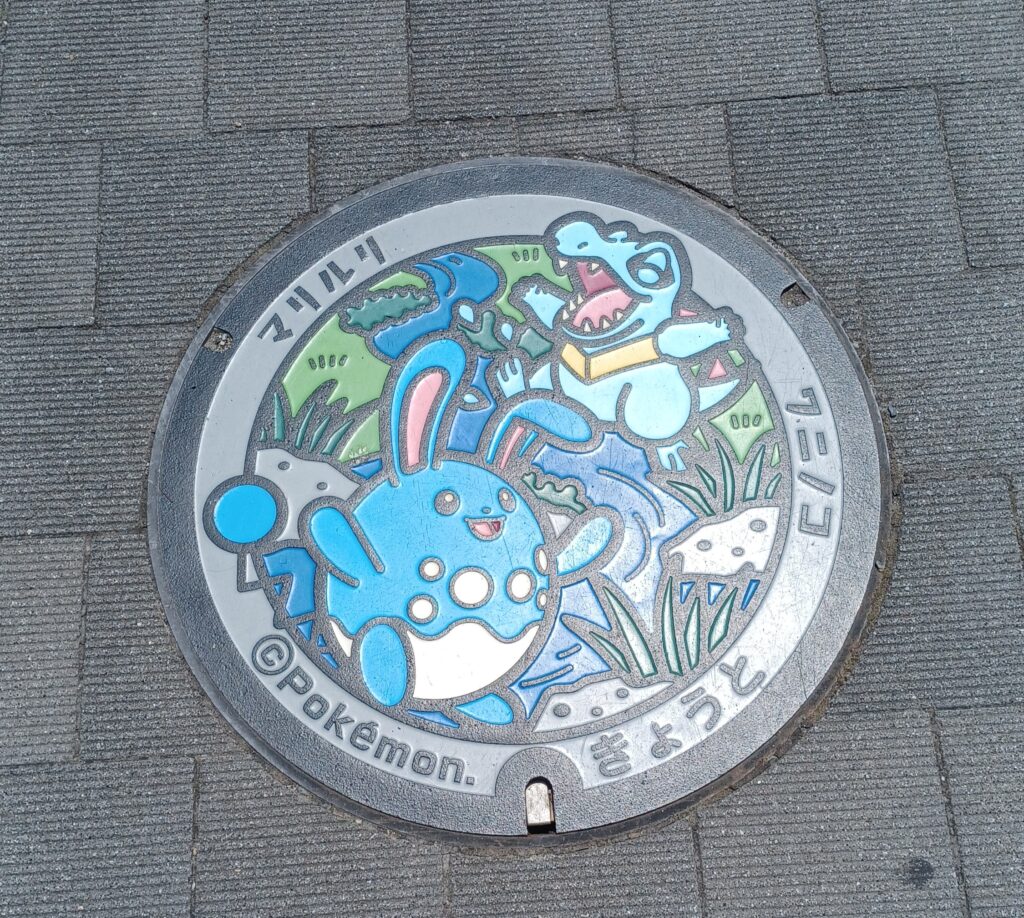
In fact, did you know that Kyoto is the real life location of Ercuteak City in the Pokémon Generation 2 games (Gold, Silver, and Crystal)? These unique manhole covers are spread all over Japan, with five of them in Kyoto City.
Where to Stay in Kyoto
I stayed at Matsubaya Ryokan (Kamijuzuyacho, Shimogyo Ward, Kyoto 600-8150, Japan), which first opened in 1884. My room had a futon bed on a tatami floor, a low table sitting area, and a yukata (Japanese-style robe) to wear.
For breakfast you can choose between Traditional Japanese breakfast and Western-style breakfast. They were happy to cook a vegetarian Japanese breakfast for me, which was super tasty!
There’s also a beautiful Japanese garden on site. Besides, the Matsubaya Ryokan is only one stop from Kyoto Station (via the Karasuma subway line).

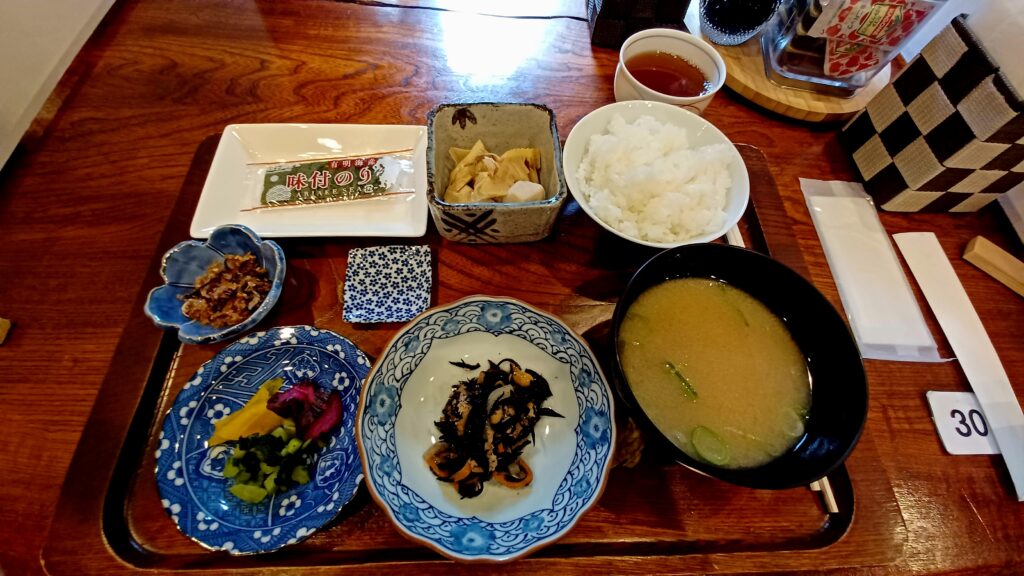
This was the largest ryokan I stayed at during my Japan trip. While it was a nice place, it felt less personal than other ryokans or guesthouses. But it’s understandable that it’s busier because Kyoto is one of Japan’s most popular places to visit!
Where to Eat & Drink in Kyoto
Hobodo Café
Address: Sakyo-ku, Shoojicho, 452, Kyoto, 606-8353, Japan
The small and 100% vegan Hobodo Café is the perfect spot for lunch! Their weekly changing menu features Japanese cuisine with international influences. There’s a little book shop as well.
When I was here in May 2023, I went for a tasty dish of various vegan foods. It consisted of brown rice, sesame-dressed turnips and radishes, silk beans, bamboo shoot dumplings in spring rolls, and more! It was so refreshing! The staff was super friendly as well.
As of July 2024, Hobodo Café is open Friday to Sunday only from 11:30 am to 5 pm.
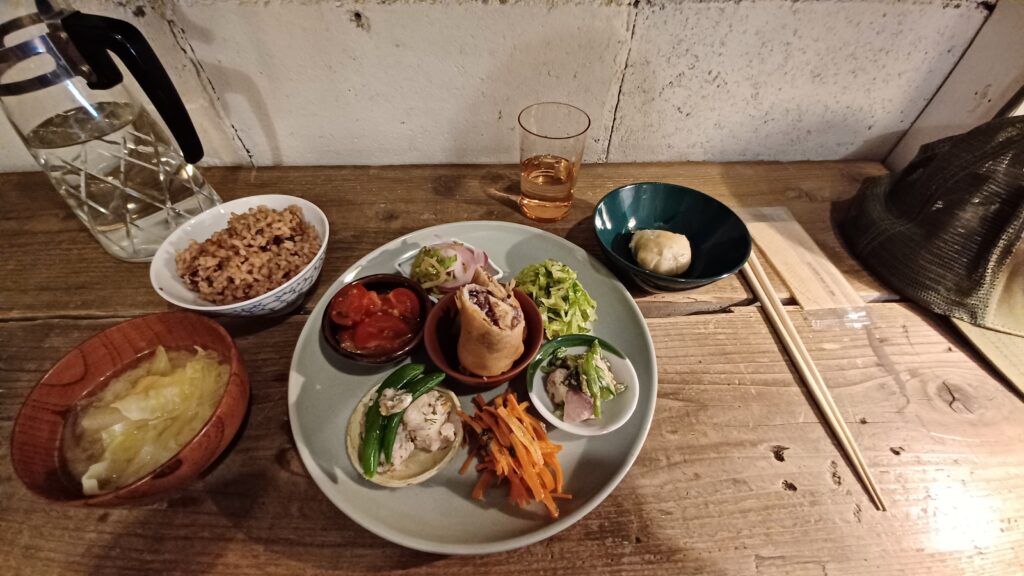
Qué Pasa – Downtown
Address: 142 Ainocho, Shimogyo Ward, Kyoto, 600-8071, Japan
Need a break from the yummy Japanese food for dinner? Then Qué Pasa is a great choice! This small Mexican burrito/Californian Fast Food Shop serves both meat and vegetarian/vegan dishes, and seems to be a popular place for students to hang out.
You can choose between tacos, burritos (duh!), nachos, quesadillas, Mexican grilled corn, spare ribs, alcoholic drinks (including Corona and Margarita), and more! I had the Veggie Burrito, which was very filling, and the staff was friendly and efficient.
Grab food from the Conbini (Convenience store)
If you’re on the go (or on a budget), grabbing snacks or a meal at one of the conbinis is a great idea! They are all over Japan, and the most common ones are Family Mart, 7-Eleven, and Lawson. Besides, pretty much all of their labels are in Japanese and English, which is very helpful!
My favourites were onigiri (rice balls), edamame chips, broccoli & cabbage salad, green tea, and of course, Japanase chocolate! Many locals get food from conbinis as well.
How to Get to and Around Kyoto on Public Transit
As one of Japan’s major cities, getting to Kyoto with public transit from any direction is very easy. Many tourists take the one of the Tokaido Shinkansen lines from Tokyo Station to Kyoto Station (2 to 3 hours).
If you’re coming from Hiroshima, just hop on the Tokaido Shinkansen line from the opposite direction to Kyoto Station (1.5 to 2 hours).
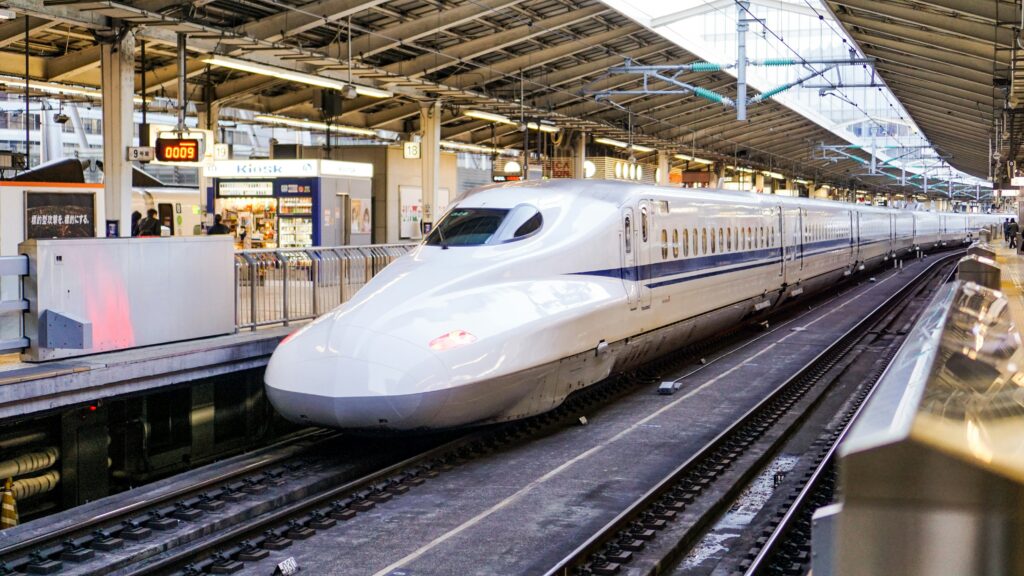
I got to Kyoto from the north, by taking the JR Thunderbird Limited Express from Kanazawa Station to Kyoto Station, which is the fastest option (2 hours 6 minutes).
Finally, if you’re trying to get to Kyoto from Osaka, it’s only 30 minutes on the Tokaido Shinkansen line.
You can also book a Highway bus or Night bus that goes from Tokyo to Kyoto, like Willer Express and the Kanto Bus. While they are much cheaper than the Shinkansen, they take much longer to get there (8-9 hours).
Inside Kyoto, there’s a good public transit system as well. You can choose between two subway lines, local trains, and a dense bus network to get around. Or book a ticket for the Sky Hop Sightseeing Bus to get to Kyoto’s major tourist attractions.
Both locals and tourists like to use a prepaid IC card (e.g. Suica, Pasmo, or Icoca) to pay for local train or bus tickets. You can buy or charge them with cash in pretty much any train/subway station.
Thanks to its flat terrain and easy layout, it’s popular to bike around Kyoto as well. There are many bike rental companies, such as next to Kyoto Station and close to Arashiyama Bamboo Grove.
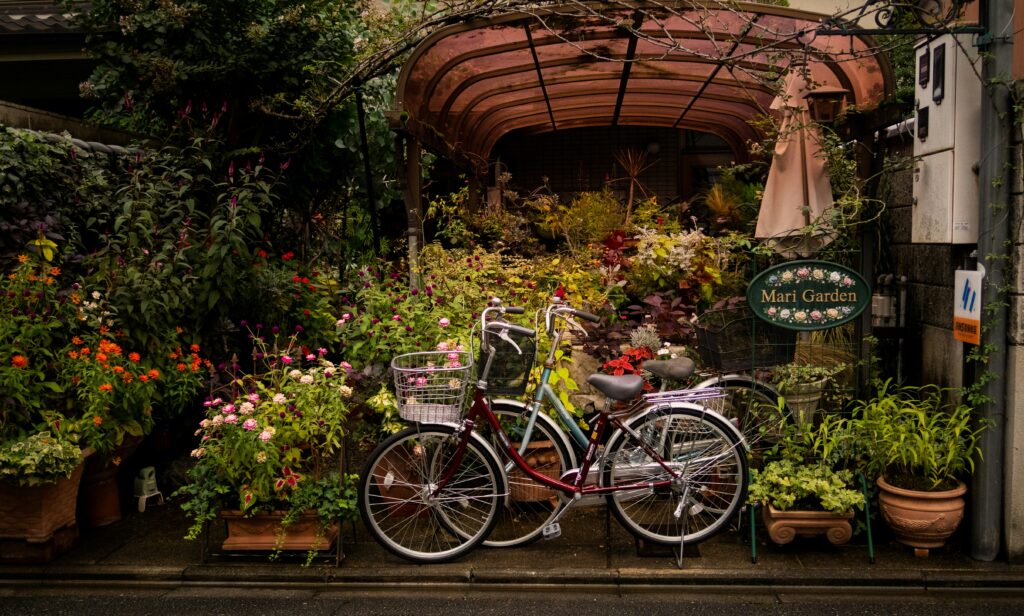
Finally, the closest airport to Kyoto is Osaka Itami Airport, about one hour by bus from central Kyoto.
Conclusion
As you can see, there are lots of great ways on How to spend 48 hours in Kyoto! Whether you’re into exploring shrines and temples, getting your manga or anime fix, eating tasty food, watching a geiko or maiko perform, or trying out a traditional Japanese tea ceremony, Kyoto has it all!
Without a doubt, my favourite activity during my Kyoto visit was the traditional tea ceremony. From learning about the tea ceremony’s history and how important it still is in Japanese society, to making our own matcha tea, I highly recommend trying out this experience. The hostess was very knowledgeable and explained everything in an easy to understand way!
Although it was quite crowded, I enjoyed walking around Arashiyama Bamboo Forest and the Fushimi Inari Shrine complex a lot. I especially liked the unique fox statues sitting close to the famous and impressive torii tunnel!
So I’m already looking forward to visiting Kyoto again and seeing some of its lesser known, but I’m sure just as amazing tourist attractions. 🙂
Traveling around Japan for a while? Then check out these posts:
Is Nikko, Japan Worth Visiting?
How To Spend Four Days in Tokyo, Japan
Is Nagoya Castle Worth Visiting? (Guest Post for The Directionally Challenged Traveler)
Fukuchiin Temple Stay in Mount Koya, Japan
- 9 REASONS TO VISIT LEIPZIG, GERMANY FOR A DAY - April 7, 2025
- ONE DAY IN ANCONA, ITALY: THE 6 BEST THINGS TO DO IN 2025 - February 28, 2025
- THE ULTIMATE SOUTH COAST OF ICELANDITINERARY: THE PERFECT DAY TRIP FROM REYKJAVIK - February 1, 2025




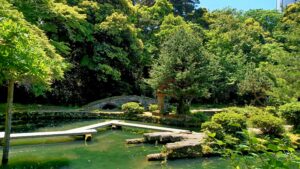

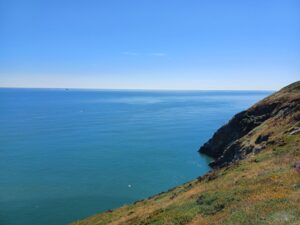
Awesome travel guide. I’ve bookmarked this post for when my family and I visit Japan. I’m amazed by how green everything is, the historic architecture looks great and I can’t wait to try all the food!
Hi Christy, thank you so much! Yeah, Japan is an amazing country with lots of things to do and see, whether you visit the cities or the countryside. Hope you enjoy your trip 🙂